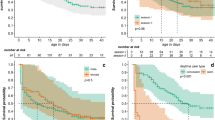Abstract
Winter body mass of the European hare Lepus europaeus Pallas 1778 was analyzed with a special focus on changes induced by handling. Data were obtained from large scale translocation (net catchments) during 1960–1980 in Poland. The influence of handling was compared using the mass of first-time captured and repeatedly-captured hares, and, in case of repeated capture, individuals’ mass changes were investigated. The average body mass ranged from 2.1 kg to 5.0 kg. Generally, fewer factors influenced the hare’s body mass than expected. Body mass was related to age and winter precipitation, while the date of catching, sex and temperature did not have an effect. Body mass of first-captured hares were significantly higher than the re-captured ones (3.99±0.42 vs. 3.88±0.48, mean ±SD). Body mass change between captures was related to the date of the first capture, and the duration between the first capture and re-capture. Following the initial capture, a slight (2.8±2.6), but significant decrease in body weight occurred. Thus, the handling of hares should be used with caution during studies or management of the species.
Similar content being viewed by others
References
Ponjoan A., Bota G., De La Morena E.L.G., Morales M.B., Wolff A., Marco I., et al., Adverse effects of capture and handling little bustard, J. Wildl. Manage., 2008, 72, 315–319
Macleod R., Gosler A.G., Capture and mass change: perceived predation risk or interrupted foraging?, Anim. Behav., 2006, 71, 1081–1087
Rands, S.A., Cuthill, I.C., Separating the effects of predation risk and interrupted foraging upon mass changes in the blue tit Parus caeruleus, Proc. R. Soc. Lon. B. Biol. Sci., 2001, 268, 1783–1790
Suazo A.A., Angelique T., Delong E.T., Bard A.A., Oddy, D.M., Repeated capture of beach mice (Peromiscus polinotus and P. niveiventrus) reduces body mass, J. Mammal., 2005, 86, 520–523
Pearson D.E., Ortega Y.K., Ruggirro L.F., Trap induced mass declines in small mammals: mass as a population index, J. Wildl. Manage., 2003, 67, 684–691
Pielowski Z., The effect of winter on the animal populations in 1970, Lowiec Polski, 1970, 5, 4–5, (in Polish)
Ergon T., Speakman J.R., Scantlebury M.I., Cavanagh R., Lambin X., Optimal Body size and energy expenditure during winter: Why are voles smaller in declining populations?, Am. Nat., 2004, 163, 442–457
Bresiński W., Weather conditions vs. European hare population dynamics, In: Pielowski Z. (Ed.), Ecology and Management of European hare populations, Proceedings of European hare symposium, Poznań, Państwowe Wydawnictwo Rolnicze i Leśne, Warsaw, 1974, 105–115
Hodges K.E., Boonstra R., Krebs C.J., Overwinter mass loss of snowshoe hares in the Yukon starvation, stress, adaptation or artifact?, J. Anim. Ecol., 2006, 75, 1–13
Cuthill I., Houston A., Managing time and energy, In: Krebs J., Davis N., (Eds.), Behavioural Ecology: an Evolutionary Approach, Blackwell Science, Oxford, 1997, 97–120
Blanckenhorn W.U., The evolution of body size: what keeps organisms small?, Q. Rev. Biol., 2000, 75, 385–407
Marboutin E., Bray Y., Péroux R., Mauvy B., Lartiges A., Population dynamics in European hare: breeding parameters and sustainable harvest rates, J. Appl. Ecol., 2003, 40, 580–591
Hansson L., Ultimate factors in the winter weight depression of small mammals, Mammalia, 1990, 54, 397–404
Millar J.S., Hickling G.J., Fasting endurance and the evolution of mammalian body size, Funct. Ecol., 1990, 4, 5–12
Lima S.L., Predation risk and unpredictable feeding conditions: determinants of body-mass in birds, Ecology, 1986, 67, 377–385
Brodin A., Mass-dependent predation and metabolic expenditure in wintering birds: is there a tradeoff between different forms of predation?, Anim. Behav., 2001, 62, 993–999
Clark C.W., Dynamic models of behavior: an extension of life history theory, Trends Ecol. Evol., 1993, 8, 205–209
Tkadlec E., Zbořil J., Losik J., Gregor P., Lisická J., Winter climate and plant productivity predict abundances of small herbivores in central Europe, Clim. Res., 2006, 32, 99–108
Hik D.S., Does Risk of Predation Influence Population Dynamics? Evidence from the Cyclic Decline of Snowshoe Hares, J. Wildl. Res., 1995, 22, 15–29
Saarikko J., Risk of predation and foraging activity in shrews, Ann. Zool. Fenn., 1992, 29, 291–299
Edwards P.J., Fletcher, M.R., Berny P., Review of the factors affecting the decline of the European European hare Lepus europaeus Pallas, 1778, and the use of wildlife incidend data to evaluate the significance of paraquat, Agric. Ecosyst. Environ., 2000, 79, 95–103
Báldi A., Faragó S., Long-term changes of farmland game populations in a post-socialist country (Hungary), Agric. Ecosyst. Environ., 2007, 118, 307–311
Pielowski Z., Pinkowski M., Numbers and distribution of the European hare in Poland, In: Pielowski Z. (Ed.), Materials of the International Hare Symposium, Czempiń 1992, Polish Hunting Association, 1995, 54–82
Smith R.K., Jennings N.V., Harris S., A quantitative analysis of the abundance and demography of European hares Lepus europaeus in relation to habitat type, intensity of agriculture and climate, Mammal Rev., 2005, 35, 1–24
Kuijper D.P.J., Beek P., van Wieren S.E., Bakker J.P., Time-scale effects in the interaction between a large and a small herbivore, Bas. Appl. Ecol., 2008, 10, 126–134
Andrzejewski R., Jezierski W., Studies on the European hare XI. Estimation of population density and attempt to plan the yearly take of hares, Acta Theriol., 1966, 12, 433–448
Pielowski Z., The individual growth curve of the hare, Acta Theriol., 1971, 16, 79–88
Pielowski Z., Ecological characteristics of the European hare Lepus europaeus Pallas 1778 population, Roczniki Akademii Rolniczej w Poznaniu, 1975, 65, 1–33, (in Polish)
Pielowski Z., Pinkowski M., A 25-year study a hare population on the hunting grounds of the Research Station at Czempiń, In: Pielowski Z. (Ed.), Materials of the International Hare Symposium, Czempiń 1992, Polish Hunting Association, 1995, 143–156
Pielowski Z., Home range and degree of residence of the Europeran hare, Acta Theriol., 1972, 17, 93–103
Stroh G., Zwei sichere Altermerkmale eim Hasen, Berlin Tierarztl. Wschr., 1931, 12, 180–181, (in German)
Andersen J., Some studies on the hare populations, Dan. Rev. Game Biol., 1958, 3, 70–71
Cabon-Raczyńska K., Variability of the body weight of European hares, Acta Theriol., 1974, 19, 69–80
Flux J.E., Reproduction and body weights of the hare Lepus europaeus Pallas, in New Zealand, New Zeal. J. Sci., 1967, 10, 357–401
Frylestam B., Growth and body weight of European hares in southern Sweden, Holarct. Ecol., 1980, 3, 817–886
Gosler A.G., The effects of trapping on the perception, and trade-off, of risks in the great tit Parus major, Ardea, 2001, 89, 75–84
Hodges K.E., Sinclair A.R.E., Does predation risk cause snowshoe hares to modify their diets?, Can. J. Zool., 2003, 81, 1973–1985
Jennings N. Smith R.K., Hackländer K., Harris S., White P.C., Variation in demography, condition and dietary quality of hares Lepus europaeus from highdensity and low-density populations, J. Wildl. Biol., 2006, 12, 179–189
Hackländer K., Arnold W., Ruf T., Postnatal development and thermoregulation in the precocial European hare (Lepus europaeus), J. Comp. Physiol., 2002, 172, 183–190
Myrcha A., Caloric value and chemical composition of the body of the European hare, Acta Theriol., 1968, 13, 65–71
Gosler A.G., Strategy and constraint in the winter fattening response to temperature in the great tit Parus major, J. Anim. Ecol., 2002, 71, 771–779
Author information
Authors and Affiliations
Corresponding author
About this article
Cite this article
Takacs, V., Zduniak, P., Panek, M. et al. Does handling reduce the winter body mass of the European hare?. cent.eur.j.biol. 4, 427–433 (2009). https://doi.org/10.2478/s11535-009-0020-6
Received:
Accepted:
Published:
Issue Date:
DOI: https://doi.org/10.2478/s11535-009-0020-6




